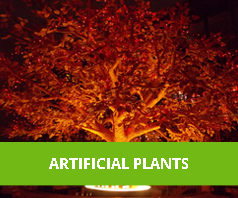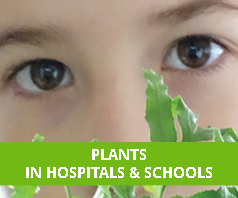
Heat and Climate Control
Temperature
Is your temperature controlled and steady?
Choose the right plant - indoor plants can be generalised as:
Tropical, such as Ficus, Philodendron, Adonidia.
These plants need a stable environment which should:
- Fluctuate by less than 10 degrees Celsius in 24 hours.
- Have a minimum temperature of 12 degrees Celsius.
Temperate (Mediterranean) such as citrus
- These plants need cool nights less than 10 degrees Celsius
Humidity
-
Air Changes - Does the air change in the planted area as part of the building controls?
-
Less than two changes an hour will bring problems with the plants exchange of oxygen.
- Blue light in the range 430-440mm is essential for Photosynthesis and for Phototropism (this spectrum dictates the direction plants grow in)
- Orange/Red light in the range 640-660mm is essential for the production of Chlorophyll and Photomorphogenesis (This determines the shape and size of the leaves)
- Yellow/green light in the range 500-600mm is essential if the plant is to appear true to colour.
- Adding a film to the glazing later to reduce glare, or as a security measure. Although changes in light level will be invisible to the naked eye available light loss has been measured as high as 90%.
- Blinds may be added, usually reducing light by around 50%
- New buildings may be built that overshadow existing ones.
-
What container is available?
-
Can we plant directly into the ground?
-
Does it have to be fixed?
-
Can it be made to rotate and emulate the action of the sun
-
What is the appropriate type and depth of compost?
At what point in the program can the plants be installed?
All the following can damage the plants and put the success of the planting scheme at risk:
-
Construction crews, plant and equipment.
-
Cold in unfinished buildings.
-
Dust, particularly from a building site or from blowers during a smoke test. This is one of the biggest problems for plants. Unlike other elements in a building, plants are alive and cannot cope with the dust from a building site.
-
Apart from limits on how big certain species grow given enough time it is possible to source almost any form and size of the plant. In some cases, this will require special shaping and growing on. Material may be sourced from North America, the Mediterranean region or even the Far East. If time does not allow you will be restricted to material already held in European Nurseries.
-
If you want something large, or a particular form or even matching plants. It is desirable to get these tagged as early as possible in the process. If special material is selected from outside Europe it will have to be brought over and acclimatised in good time.
-
For a large project to work a two-year lead-time is not unusual.
-
Overall height and width of trees. Normally this will be from the bottom of the pot to the top of the canopy (not including protruding branches or leaves).
-
Is a clear stem required and, if so, how much?
-
Container: This can have a considerable effect on the overall height. A large pot can add up to 0.5m in overall height.
-
If being planted directly into the ground then specify height from the top of the root ball. Sometimes the plant sits below floor level and this thickness should be taken into account.









